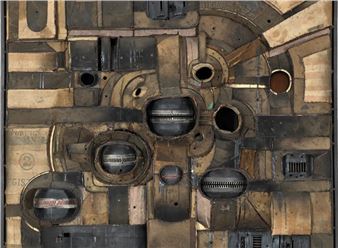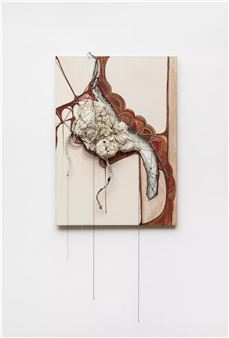Women and The Void: Abstract Expressionism on Paper
Women and the Void: Abstract Expressionism on Paper displays 21 works on paper by women working in abstraction between 1945 вҖ“ 1970.
Both the post-war action painters and the colour field Abstract Expressionists shared the same common belief: that following the war and the surrealist movement, abstract painting was able to achieve a transcendentalism that figurative painting could not. As Barnett Newman stated in 1948, вҖҳInstead of making cathedrals out of Christ, man, or вҖҳвҖҳlifeвҖҷвҖҷ, we are making it out of ourselves, out of our own feelingsвҖҷ. How can we reconcile this narrative with a distinct lack of women and painters of colour in the canon?
The exhibition comes at a unique time when there is a burgeoning interest in the plight of twentieth-century female abstract artists, both amongst revisionist scholars and museum curators, popularised by Mary GabrielвҖҷs 2018 book, Ninth Street Women. Huxley-ParlourвҖҷs exhibition builds on a this project by focusing on works beyond painting: all works are on paper and at a smaller scale than is generally associated with Abstract Expressionism. The exhibition, too, explores the practises of women in abstraction beyond the mainstream big five.

Recommended for you
Women and the Void: Abstract Expressionism on Paper displays 21 works on paper by women working in abstraction between 1945 вҖ“ 1970.
Both the post-war action painters and the colour field Abstract Expressionists shared the same common belief: that following the war and the surrealist movement, abstract painting was able to achieve a transcendentalism that figurative painting could not. As Barnett Newman stated in 1948, вҖҳInstead of making cathedrals out of Christ, man, or вҖҳвҖҳlifeвҖҷвҖҷ, we are making it out of ourselves, out of our own feelingsвҖҷ. How can we reconcile this narrative with a distinct lack of women and painters of colour in the canon?
The exhibition comes at a unique time when there is a burgeoning interest in the plight of twentieth-century female abstract artists, both amongst revisionist scholars and museum curators, popularised by Mary GabrielвҖҷs 2018 book, Ninth Street Women. Huxley-ParlourвҖҷs exhibition builds on a this project by focusing on works beyond painting: all works are on paper and at a smaller scale than is generally associated with Abstract Expressionism. The exhibition, too, explores the practises of women in abstraction beyond the mainstream big five.
Related articles
We were told that women were on the peripheries of the artistic movement, while in fact they were driving it forward, energetically engaging in this radical pictorial language.

 ARTISTS
ARTISTS
















